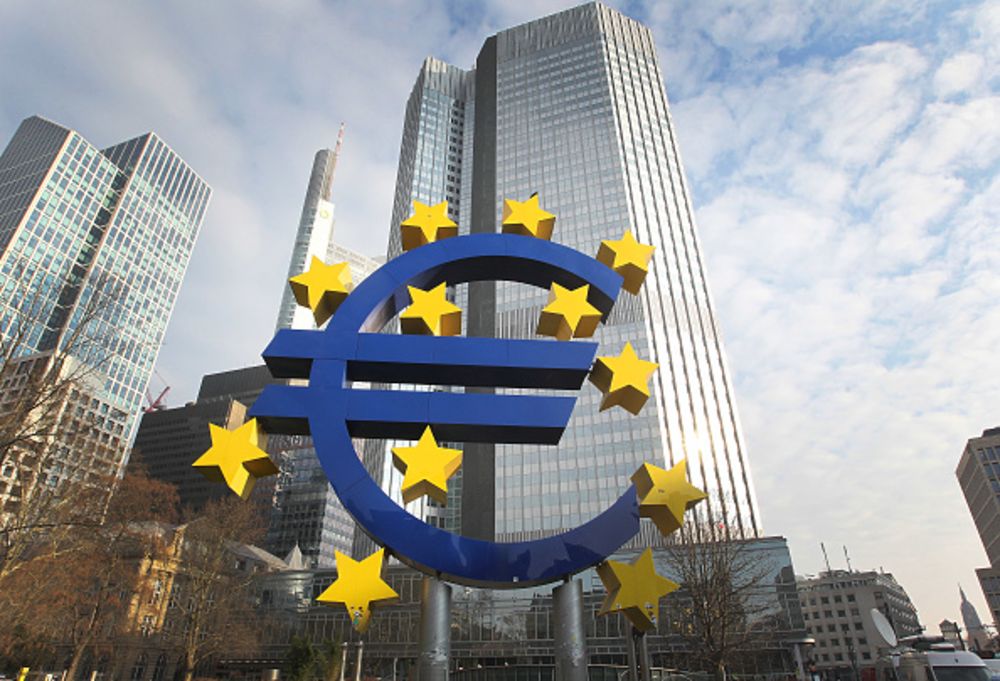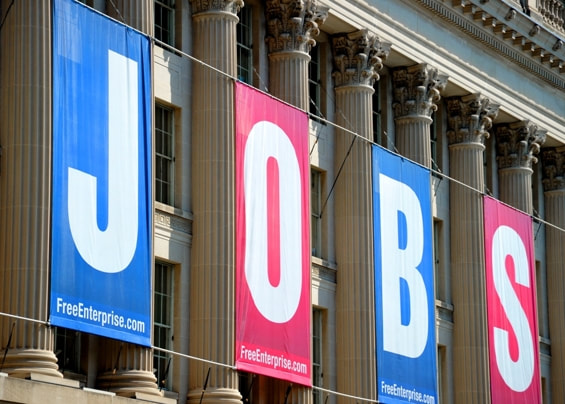 Shanghai steel futures extended gains to hit an eight-week high on Monday. Rebar and hot rolled coil both hit peaks last seen on May 19, when the market last spiked only to crash after dire warnings from Beijing about speculative activity and the threat of action against excessive rises in commodity prices. Beijing’s pressure to curb excess production capacity as part of wider environmental targets raises the prospect of material shortages in the face of still robust demand. Late last week, the People’s Bank of China announced it would cut the bank’s reserve requirement ratio by 50 basis points, effective from July 15. It would release around 1 trillion yuan to underpin an economic recovery that Nasdaq reports is starting to lose momentum.
The move supported further price rises. However, in reality, it would take months for the PBOC’s relaxation of reserve requirements to filter though into any increase in construction activity and, hence, demand. Steel Production According to the World Steel Association, global crude steel production increased by 14.5% year over year for the first five months of 2021. North American steel production rose by 11.3% during that period, with a sharp 47.7% increase in May alone. For the week of July 3, the American Iron and Steel Institute reported that domestic raw steel production totaled 1,842,000 net tons. The capability utilization rate reached 83.0%. There has been a slow but continuous increase since the week of Jan. 2, when the institute reported steel production was 1,650,000 net tons at a capability utilization rate of 74.6%. Despite this increase, all forms of steel prices remain at an all-time high. U.S. Imports The latest data from the Steel Import Monitoring and Analysis (SIMA) showed steel import permit applications for June increased by 12.4% compared to the previous month. Imports totaled 2,965,000 net tons. Import permit tonnage for finished steel in June increased by 6.8% month over month to 1,982,000 net tons.
0 Comments
OPEC and its allies have been unable to agree on a supply increase, creating volatility in the market and pushing crude to its first weekly loss since May last week. Fuel consumption in economies such as the U.S. and China has boosted oil prices this year amid tight global supplies. China’s slowing economic recovery and the spread of the delta variant may threaten the global demand for oil and the commodity’s trajectory so far this year.
The economic data in China is startening to soften. Economists see China’s growth as easing in the second quarter to around 8% which is in contrast to the record gain of 18.3% in teh first quarter. In addition, retail sales and industrial production are expected to moderate, too. With these factors and the delta variant spreading exponentially, there is going to be more uncertainty about the demand recovery. OPEC+ abandoned meetings last week after a dispute between members over production cuts, and one week later, no deal is in sight. This is causing more uncertainty about oil supply to the market. The International Energy Agency will release its monthly report on Tuesday and OPEC will release its own monthly report on Thursday. This harvest is made up of around 16 million bags of conilon robusta coffee, and approximately 14 million bags of arabica coffee. The U.S. National Weather Service’s Climate Prediction Centre has revised the earlier El Niño La Niña Southern Oscillation (ENSO) neutral outlook, and is now forecasting that there is a 66% chance for a La Niña phenomenon to develop later this year. The La Niña weather phenomenon historically brings with it excessive rains for the Pacific Rim countries. What does this mena for coffee? Excessive rains will have an impact upon the climatic conditions within Colombia, Indonesia and Peru, while it can also influence dry conditions for the arabica coffee districts in South East Brazil. If the La Niña phenomenon plays out, there will be concerns over excessive rain damage for the coffee crops in Colombia, Peru and Indonesia. It will also bring concerns about the threat of drought damage for the next 2022 Brazil crop. The September-to-September contract arbitrage between the London and New York markets widened yesterday to register this at 74.82 usc/Lb. This equates to 49.14% price discount for the London Robusta coffee market. This wide arbitrage will likely be viewed by price sensitive roasters as an attractive alternative discount for robusta against the comparatively higher value arabica coffee. It was a mixed day on the commodity markets yesterday, as we saw a stronger dollar pressuring the commodities. The Coffee markets ended the day on a positive note, while other commodities such as Sugar, Cocoa, Corn, Wheat, Soybean, Gold, Silver, Palladium and Platinum markets ended the day on a softer note. The main highlights from the ECB's strategy review:
Year on year, exports were up by more than 36% and have now almost returned to pre-crisis levels. The German export sector benefits from the continuing recovery the U.S. and China. In the first half of the year, the US remained the single most important export destination while China became the second most important destination, taking over from France. The role of China is changing and this is reflected by the fact that for the first time ever, Chinese manufacturing exports exceeded Germany’s. China is clearly a top export destination for German manufacturers but has also become a formiddable competitor in global markets. Brexit has also left its mark on German trade as the UK has dropped out of the five most important trading partners list with German companies. Germany exported more to Austria than to the UK in the first half of the year. The outlook is mainly positive as the recovery gains momentum and the order books are filling up nicely, however, there are headwinds with supply chain issues that could lead to more delivery problems and consequently, this may have an impact on the export data in the months ahead. Gas-Weighted Degree Day Bespoke Weather Services said its outlook updated Wednesday showed a decline in gas-weighted degree day (GWDD) expectations. The forecast pointed to modestly lower projected demand over the remainder of the trading week, however, forecaster have that strong heat continues to permeate much of the Lower 48. At this point, the 15-day forecast as a whole is just a few GWDD over the five-year normal so the weather pattern right now is fairly neutral. Having said that, the East continues to see occasional strong spikes of heat, while the South, especially Texas, is not seeing anomalous heat. The National Weather Service data showed hot high pressure over the East Coast with highs in the 90s across several major markets, including Philadelphia and New York City. Even more intense heat scorched the West and Southwest with highs ranging from the 90s to well above 100. However, heavy rains over parts of Texas dampened demand and there was more rain on the radar for Thursday. A separate weather system is expected to move into the Great Lakes and farther east Thursday, bringing comfortable temperatures in the 60s and 70s. Storm Elsa According to the National Hurricane Center (NHC), tropical storm Elsa has been lashing western Florida on Wednesday with heavy rains and sustained winds of 65 mph along the state’s northern Gulf Coast. The storm is expected to turn north-northeast and move up the coast Thursday toward Georgia and South Carolina. The impact of the storm is expected to prove modestly bearish for gas prices. The risk to production is looking minimal and pipelines in Elsa’s path have not posted any notices related to the storm as trading got underway Wednesday, according to analysts. There isn't any major production in or around the projected path and the storm missed the producing areas of the Gulf of Mexico according to analyst. Natural Gas Production Production on Wednesday held slightly above 90 Bcf, which is off recent highs around 92 Bcf. This was offset, however, by lower LNG volumes. LNG feed gas levels on Wednesday hovered around 10.9 Bcf, according to estimates, down a tick from the previous day. It was also below the 11-plus Bcf threshold that had effectively become the norm over the spring and early summer amid robust demand for U.S. exports from Europe and Asia. The European natural gas market has seen the storage deficit versus the five-year average grow to 660 Bcf, which is up approximately 100 Bcf over the past month. With supplies tight and prices in Europe notably higher than in the United States, natural gas futures will need to gain more than $5/MMBtu for economics to lead to shut-ins of U.S. LNG exports. U.S. Energy Information Administration Attention is now turning to Thursday U.S. Energy Information Administration (EIA) natural gas inventory report. Ahead of the report, covering the week ended July 2, most estimates were running notably below the five-year average for this time of year. Injection estimates in a Bloomberg poll landed a median of 29 Bcf. Predictions ranged from 19 Bcf to 47 Bcf. Results of a Reuters survey, meanwhile, ranged from injections of 22 Bcf to 64 Bcf, with a median build of 29 Bcf. NGI’s model predicted a 28 Bcf build, which would come in well below both the 57 Bcf year-ago injection and the five-year average build of 63 Bcf. Weather Outlook Looking to next week, forecasts show highs in the 90s or above for much of the Lower 48, indicating strong national demand ahead. This includes early peaks above normal levels with low to mid-100s in Salt Lake City and Sacramento and low 110s in Las Vegas, accroding to forecasters. They also expect sustained heat in the East in mid-July.
US Job Openings
US job openings have hit a new all-time high of 9.21mn in May, up from a revised 9.19mn level in April, with hirings continuing to lag well behind at just 5.93mn. What does this tell us? Well, it shows that there is huge amount of excess demand for workers in a market with continuing labour supply constraints. This presents the risk of more upward pressure on wages and more persistent inflation in the US economy. The challenges of finding wokers is a continuing theme in recent months and this has been highlighted in the June ISM manufacturing and services reports. Employment components were both moving into contraction territory despite surging orders and production. In addition, the National Federation of Independent Businesses reports that 46% of small business owners had job vacancies they could not fill, which was down slightly from the previous month’s all-time high reading, but more than double the 48-year historical average of 22%. What does this tell us? It points towards a situation that could put the brakes on growth simply because companies cannot expand as planned. The Federal Reserve has a view that the labour market will be more balanced from September as childcare issues ease with schools returning to in person tuition. In addition, expanded unemployment benefits will stop and this should help to make jobs more financially attractive and entice people back to employment. Increasing Pay Pressures Companies are looking to take advantage of the reopening and stimulus driven economic growth. This means expansion plans are in play but recruiting new staff is proving to be a challenge. Therefore, companies are increasing pay to attract staff. This was reflected in a new all-time high for the proportion of companies raising compensation as measured by the NFIB. This is putting pressure on companies on two fronts because they not only need to raise pay to attract employees but also pay more to retain existing employees. This will fuel inflationary pressures and keep inflation higher for longer, which ultimately, could prompt the Fed to raise rates sooner. This rally was primarily driven by dry weather in Brazil and the resulting deterioration in the crop. Sugar cane likes warm, moist weather for optimal cultivation. In addition to the dryness, falling temperatures in late June have caused concerns that Brazil’s cane crop has been damaged further. Add frost into the equation and the crop is under even more stress. Farmers and traders will be monitoring the weather and the condition of the crop closely to ascertain the extent of the damage. Consequently, harvesting may pick up the pace which may indicate a decline in yield.
Last year, the 2020-21 season, Brazil exported 32 million metric tons of sugar, around half of global exports. For the current 2021-22 season, the USDA sees those exports dropping by approximately three million tons. Lets turn our attention to the crop in Asia beacuse it may take a hit too. Thailand and India were the second and third-largest exporters last year, and they could see their crops damaged by a possible drier monsoon than usual later this month. If this happens, then we'll start to see the impact in later July. This is a concern because these two countries account for 21% of global exports. We also need to take into account the orice of cruide oil as this will be a key driver of sugar prices. Brent oil has recently hit $77 on strong demand and tight supply as well as the recent disagreements in OPEC and it allies. Last weekend, the Organization of Petroleum Exporting Countries failed to reach an agreement on increasing oil-production quotas, sending shock waves through the market for crude. The cane harvest in Brazil doesn’t only go toward making sugar as some of it is used for conversion to ethanol, which oil refiners blend into gasoline. When oil prices are elevated, some refiners switch to ethanol for use in gasoline blends to reduce costs. Consequently, that increased ethanol demand boosts demand for sugar, helping to support higher sugar prices. Historically, there is a correlation between higher oil prices and higer sugar prices. |The sugar markets are relatively thinly traded which means we could see some rapid price movement. In weather markets, forecasting can be tricky and if you add in the geo-political landscape, it becomes even more of a challenge. However, the odds look to be in favor of higher sugar prices at this time. So how can we play the sugar market? Bullish sugar traders can buy October-dated sugar No. 11 futures contracts on the ICE Futures U.S. exchange. However, not all traders want to pay the ICE exchange fees so an alternative is to purchase the Teucrium Sugar exchange-traded fund (ticker: CANE), which tracks prices of sugar futures.
The deal would see the group increase supply while also extending its pact until the end of next year. However, after two days of talks, ministers have not been able to reach an agreement and have halted negotiations until Monday. The UAE agreed that OPEC+ should raise output by 400,000 barrels a day each month from August and that the market needed this. However, they wanted the OPEC+ supply agreement reached in early 2020 to be treated separately. They stated that the decision to extend the deal unitl the end of 2022 was unnecessary to take right now and that there was plenty of time to discuss this at a later stage. Under the 2020 deal, the UAE has a baseline production figure of 3.2 million barrels a day.
OPEC+ ministers are set to reconvene on Monday. A failure to reach an understanding risks sending crude prices even higher. Demand is rising faster than supply as major economies reopen from the coronavirus pandemic. Oil analysts and traders are looking at the numbers and wondering whether the production increases on the table will be enough to balance the strong demand as we head into the summer. Some analysts are considering prices heading north of $80 a barrel and possibly to $100 a barrel if OPEC don't raise output next month. The UAE has made large investment in their production capability and they are keen to realise a return on that investment, hence why they a driving for a higher production quota. The UAE is leaving about one-third of its production capacity idle, a higher portion that other members of OPEC. Their production surged to a record of more than 4 million barrels a day in April last year during a brief supply war, when cooperation between Saudi Arabia and Russia collapsed. However, prior to this, the country had only ever pumped more than 3.2 million barrels a day on average twic, in November and December 2018, the two months before the OPEC+ deal set its baseline at that level.
The strong increase in global copper smelting activity during May across all regions dropped off in June as China entered the seasonal maintenance window. However, global activity levels during the month remained well above the lows seen earlier this year, with small month-on-month increases in North America and Europe, and small decreases in South America and Asia excluding China.
The copper global activity dispersion index averaged 48.0. for the month, which is a small decline on the 49.4 of last month. The Activity Dispersion Index is a measure of capacity-weighted activity levels observed at smelter sites where a reading of 50 indicates that current activity levels are at average levels. Readings above or below 50 indicate greater or lesser activity levels than average, respectively. The China copper index fell to 47.0 from 48.9, as idle capacity rose to the highest level since last June, due to maintenance periods. Asia excluding China exhibited a similar profile to China, with activity levels falling to 48.2 from 51.5, again due to higher idle capacity. North America has been the slowest region to recover and only registered a relatively weak 38.9 in May, however, there was an improvement on previous periods, but this was sustained in June with an average 46.0. Europe's activity readings came in at 49.1 in June, an improvement on May’s 45.7. South America had been the standout region in May with a reading of 59.2 but has declined to 53.9 in June. The SAVANT platform monitors up to 90% of Copper and 96% of Nickel smelting capacity around the globe. Using daily updated sources, including extensive use of geospatial data collected from satellites, the index reports on the activities at the world’s smelting plants offering subscribers unprecedented levels of coverage, accuracy and reliability. This dataset allows users to make better informed and more timely trading decisions. To find out more please visit SAVANT, or sign-up for the Free SAVANT service. |
AuthorTim the trader Archives
January 2025
Categories |
Site powered by Weebly. Managed by iPage









 RSS Feed
RSS Feed